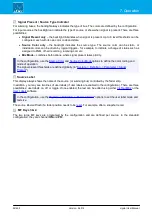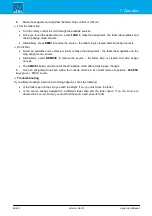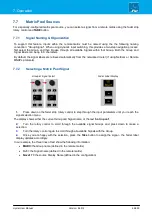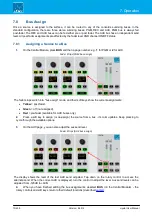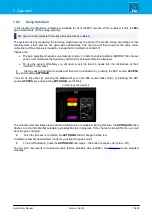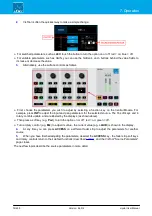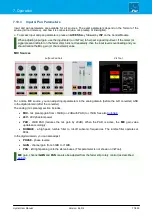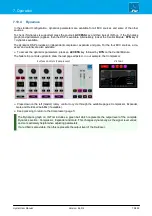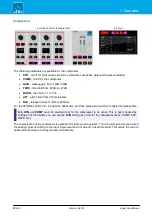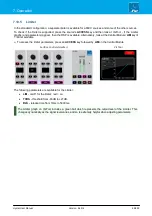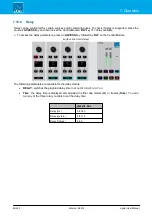
crystal User Manual
Version: 6.6.0/2
72/459
7. Operation
7.9
Input Gain & Pan
Rotary Control Parameters (MIC source)
The quickest way to adjust input gain, or the left/right pan position, is to turn the fader strip rotary control.
For MIC sources, two separate input gains are available:
Mic
gain (in the analog mic preamp) and channel
Gain
(applied in the digital domain). For other sources, only channel
Gain
is available.
For a mono source, you will see left/right pan. For a stereo source, this changes to left/right balance.
1
.
Turn the rotary control to adjust the first parameter - you will see both its name (e.g.
Mic
gain) and
value (e.g.
+42dB
).
2
.
Press down on the rotary control to step to the next parameter (e.g. channel
Gain
).
3
.
Press down again to reach the next parameter (e.g. left/right pan).
4
.
If you keep tapping down, then the sequence repeats. The available parameters for a mono MIC
source are shown above.
To interrogate parameters without making a change, tap down on the rotary control without turning - the
display will show the parameter and its current value.
For more information on gain ranges and other input parameters, please see
.
7.9.1
Surround Panning
If a surround bus is configured and surround parameters are enabled on the source, then the sequence
includes the following.
·
Left/Center/Right pan position
·
Front/Rear pan position
·
Slope
– from 0.0 to 1.0 (see below).
·
LFE
– low frequency effect level, from -120 to +9 dB
.
The Slope adjusts signals feeding the discrete center channel within the surround field. It may be used to
balance between discrete and phantom center signals. To see the effect, position the source at front center,
and adjust the slope to a setting of 1.0; the signal feeds only the discrete center output. Now set the slope to a
value of 0.0; the signal feeds only left and right (phantom center).
On a stereo source you can adjust the left/right balance, front/rear pan and LFE level. Center slope is not
available.
On a surround (5.1) source you can adjust LFE level only; the surround source is assigned directly to the
surround bus (e.g. left to left, center to center, etc.)
If a surround source is assigned to a stereo bus, then the source is mixed onto the bus according to the
parameters set within the configuration. If a surround source is assigned to a mono bus,
then the stereo downmix is converted to mono by subtracting 3dB from, and then summing, the L and R
channels.





